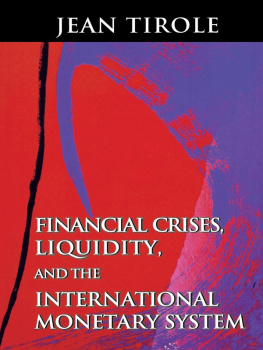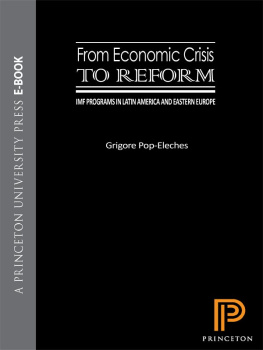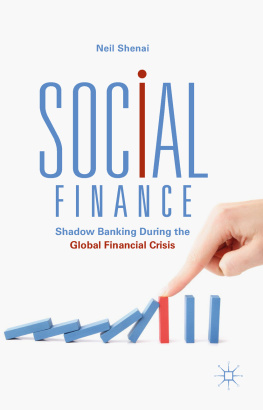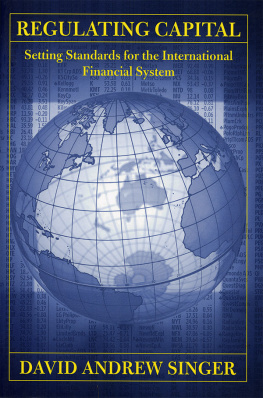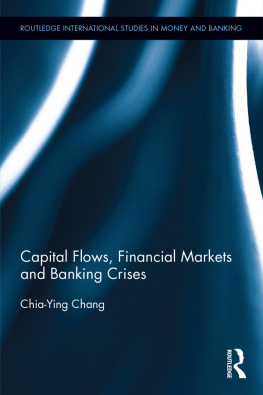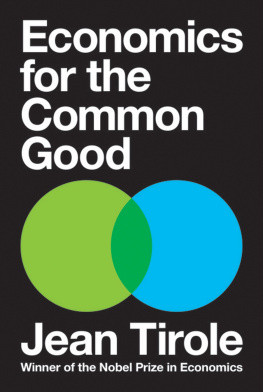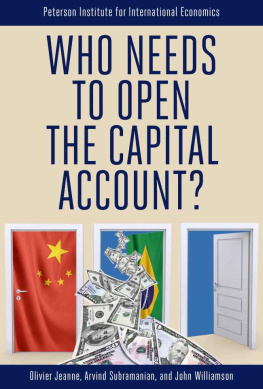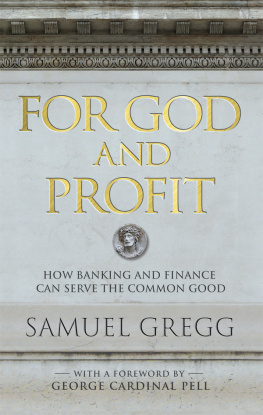
FINANCIAL CRISES, LIQUIDITY, AND THE INTERNATIONAL MONETARY SYSTEM
This book is based on the Paolo Baffi Lecture given by the author at the Bank of Italy in October 2000. The Paolo Baffi Lecture is sponsored by the Bank of Italy.
FINANCIAL CRISES, LIQUIDITY, AND THE INTERNATIONAL MONETARY SYSTEM
Jean Tirole
PRINCETON UNIVERSITY PRESS PRINCETON AND OXFORD
Copyright 2002 by Princeton University Press
Published by Princeton University Press, 41 William Street, Princeton, New Jersey 08540
In the United Kingdom: Princeton University Press, 3 Market Place, Woodstock, Oxfordshire OX20 1SY
All Rights Reserved
Library of Congress Cataloging-in-Publication Data applied for.
Tirole, Jean
Financial Crises, Liquidity and the International Monetary System / Jean Tirole
p. cm.
Includes bibliographical references and index.
ISBN 0-691-09985-5 (alk. paper)
British Library Cataloguing-in-Publication Data
A catalogue record for this book is available from the British Library.
This book has been composed in Sabon
www.pup.princeton.edu
10 9 8 7 6 5 4 3 2
Contents
Acknowledgments
Giving the sixth Paolo Baffi Lecture on Money and Finance is a great privilege and honor for me. When Albert Ando, on behalf of the scientific committee, Governor Fazio and the Bank of Italy, asked me to give the lecture, I was both thrilled and intimidated by the challenge. The distinguished lists of economists who preceded me and the Banks long-standing tradition of excellence in economic research (a tradition that Governor Baffi helped setting up and that is certainly alive today) provided both high-powered incentives and anxiety.
I could not have written this lecture without the key input of Bengt Holmstrm (who co-authored with me a series of papers on aggregate liquidity) and Olivier Blanchard. My discussant, Richard Portes, Ricardo Caballero, Paola Caselli, Mathias Dewatripont, Philippe Martin, Larry Summers, Daniele Terlizzese, and especially Curzio Giannini and Olivier Jeanne gave very detailed and useful reactions to a first draft in the fall of 2000. I also thank three reviewers for helpful comments.
Finally, I would like to thank the Bank of Italy for its remarkable hospitality and for making the preparation of this manuscript a real pleasure.
Introduction
A wide consensus had emerged among economists. Capital account liberalization allowing capital to flow freely in and out of countries without restrictions was unambiguously good. Good for the debtor countries, good for the world economy. The twofold case for capital mobility is relatively straightforward: First, capital mobility creates superior insurance opportunities and promotes an efficient allocation of investment and consumption. Capital mobility allows households and firms to insure against country-specific shocks in worldwide markets; households can thereby smooth their consumption and firms better manage their risks. Business cycles are dampened, improved liquidity management boosts investment and promotes growth. Second, besides insurance, capital mobility also permits the transfer of savings from low- to high-return countries. This transfer raises worldwide growth and further gives a chance to the labor force of low-income countries to live better. In these two respects, the increase in the flow of private capital from industrial to developing countries from $174 billion in the 1980s to $1.3 trillion during the 1990s should be considered good news.
That consensus has been shattered lately. A number of capital account liberalizations have been followed by The past twenty years have witnessed large scale crises such as those in Latin America (early 1980s), Scandinavia (early 1990s), Mexico (1994), Thailand, Indonesia, and South Korea (1997), Russia (1998), Brazil (19989) and Argentina (2001), as well as many smaller episodes. The crises have imposed substantial welfare losses on hundreds of millions of people in those countries.
Economists, as we will discuss later, still strongly favor some form of capital mobility but are currently widely divided about the interpretation of the crises and especially their implications for capital controls and the governance of the international financial system. Are such crises just an undesirable, but unavoidable byproduct of an otherwise desirable full capital account liberalization? Should the world evolve either to the corporate model where workouts are a regular non-crisis event or to the municipal bond model where defaults are rare? Would a better sequencing (e.g., liberalization of foreign direct and portfolio investments and the building of stronger institutions for the prudential supervision of financial intermediaries before the liberalization of short-term capital flows) have prevented these episodes? Should temporary or permanent restrictions on short-term capital flows be imposed? How does this all fit with the choice of an exchange rate regime? Were the crises handled properly? And, should our international financial institutions be reformed?
This book was prompted by a questioning of my own understanding of its subject. Several times over recent years I have been swayed by a well-expounded and coherent proposal only to discover, with striking naivety, that I later found an equally eloquent, but inconsistent, argument just as persuasive. While this probably reflected lazy thinking on my part, I also came to wonder how it is that economists whom I respect very highly could agree broadly on the facts and yet disagree strongly on their implications.
I also realized that I was missing a broad picture. An epitome for this lack of perspective relates to international institutions. I have never had a clear view of what, leaving aside the fight against poverty, the International Monetary Fund (IMF) and other international financial institutions (IFIs) were trying to achieve: avoid financial crises, resolve them in an orderly manner, economize on taxpayers money, protect foreign investors, respect national sovereignty, limit output volatility, prevent contagion, facilitate a countrys access to funds, promote long-term growth, force structural reforms not to mention the IMFs traditional current account, international reserves and inflation objectives.
This book is to some extent an attempt to go back to first principles and to identify a specific form of market failure, that will guide our thinking about crisis prevention and institutional design. Needless to say, I will be focusing on a particular take on the international financial system, which need not exclude other and complementary approaches. I believe, though, that the specific angle taken here may prove useful in clarifying the issues.
The book is organized as follows. summarizes and discusses routes for future research.
Summers (2000).
131 of the 181 IMF member countries have experienced banking problems between 1980 and 1995 (IMF 1996).
For example, the Meltzer Commission, or more precisely the International Financial Institution Advisory Commission, chaired by Alan Meltzer and reporting to the US Congress (2000), views the role of the IMF as limiting the incidence of crises, reducing their severity, duration and spillovers.
FINANCIAL CRISES, LIQUIDITY, AND THE INTERNATIONAL MONETARY SYSTEM
1
Emerging Markets Crises and Policy Responses
Many excellent books and articles have documented the new breed of twenty-first century financial crises. I will therefore content myself with a
Next page
